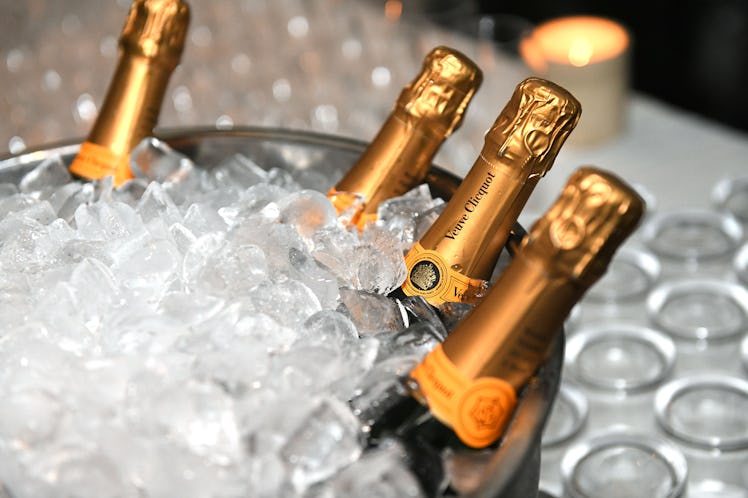
Here's What To Consider About Picking A Bubbly Before The Ball Drops On NYE
Christmas is just around the corner, which means it's time to start thinking about the bites and sips you'll be offering as part of your holiday spread. If you're in charge of providing the festive sips at a Christmas dinner, office party, or any other holiday gathering, you might be wondering, what’s the difference between champagne and sparkling wine, such as a prosecco, or a cava? Is there a real difference between the bubblies, and is choosing a bottle of champagne for your gathering worth the extra price tag?
The short answer is that the differences between champagne and sparkling wine are based on the location that the libation came from (as well as the method that was used to create the bubbly). First things first: while all champagne can be classified as sparkling wine, not all sparkling wine can be accurately called champagne.
Sparkling wine, technically, is any wine that contains carbon dioxide bubbles, which means beverages like prosecco, cava, sekt, and yes, champagne, are all included in the category. However, what differentiates these different types of sparkling wine from each other are where they were made and how they got their fizz.
In many European winemaking countries, there are strict limits on how winemakers can label wine depending on where it was made and what kind of grapes are in it. For example, prosecco is an Italian sparkling wine that's usually made from glera grapes, while Spanish c ava is made from macabeu, parellada, and xarello grapes, according to Boston Magazine.
When it comes to quality and the strict guidelines governing its creation, champagne is on a different level.
Champagne, by definition (and European law), comes from the Champagne region in France, and is generally made with chardonnay, pinot noir, and pinot munier grapes (although there are several other grapes permitted, these are the most common ones). The grapes also must be grown in Champagne, which is known for its mild climate and mineral-rich soil, and the juice must undergo a very precise process to make the resulting beverage. After the liquid undergoes an initial effervescence treatment to give it its bubbles, all potential champagnes are subject to the "méthode Champenoise," or the "traditional method."
Unlike a sparkling wine like prosecco, which oftentimes undergoes the second fermentation in a big vat, champagnes go through the process in each individual bottle, making it much more specialized and complex. A liqueur de tirage (a wine solution of sugar and yeast) is added to the wine base, which starts off the process. This accounts for champagne's notoriously high price tag.
It's important to note, however, that many winemakers use the specialized "méthod Champenoise" on other sparkling wines using different grapes, such as vineyards in the United States or other parts of Europe. However, because these wines aren't derived from grapes grown in the Champagne region, they technically don't qualify as champagne. Many are equally delicious and very high quality, however, and your choice should come down to individual taste and preference.
With champagne and other sparkling wines, there are a few other things to take into consideration when picking your bottle, namely how sweet you want your sips to be. If you pick a "Brut" bottle, expect a refreshment that's very dry on the palate. Weirdly enough, an "Extra Dry" sparkling wine is actually the opposite of what you'd think because it's sweeter than "Brut." The order of sparkling wines from driest to sweetest goes: Brut, Extra Dry or Extra Sec, Sec, Demi-Sec and Doux, so keep that in mind when you're perusing your grocery store.
Again, your bottle of bubbly should come down to your taste and preference, not what's most prestigious or most expensive, so I'd recommend grabbing a flute and sampling a few of the different options before making a final decision. Cheers!